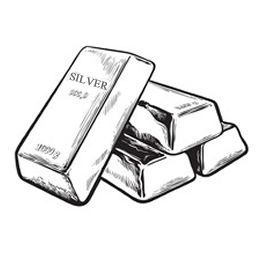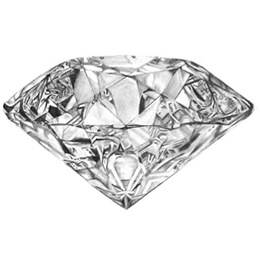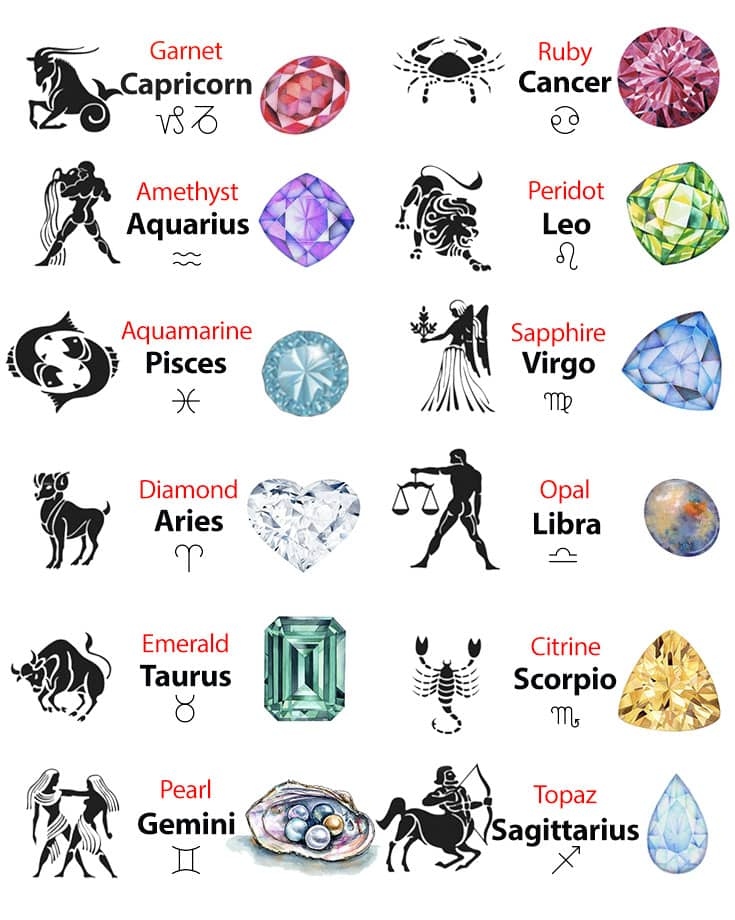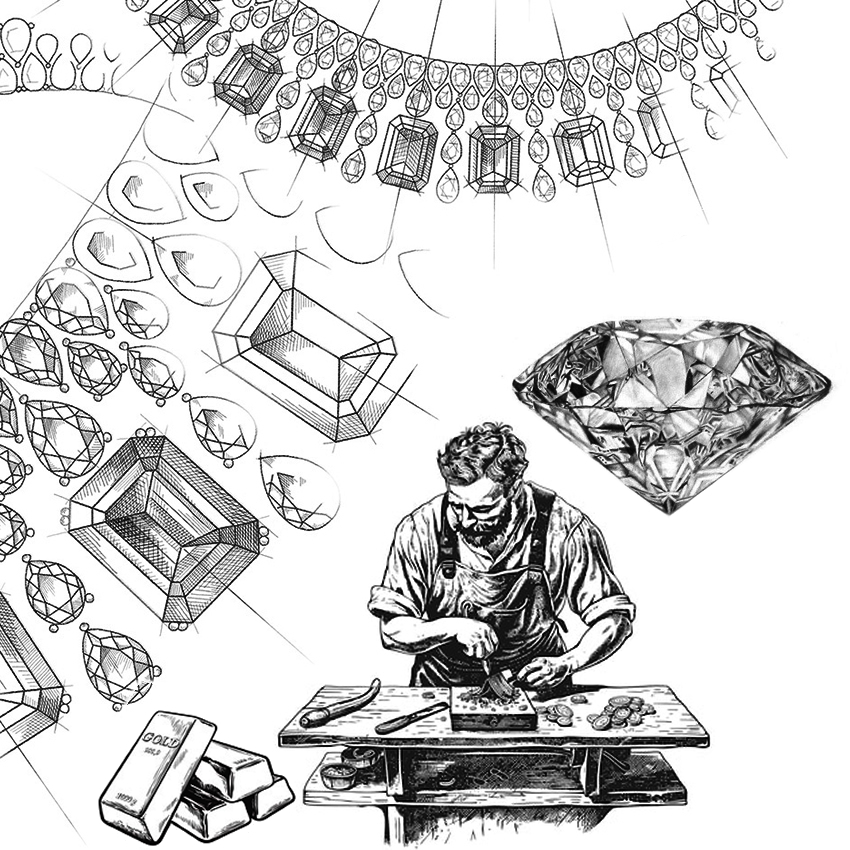
Shopping Guides About Diamond, Gold, Silver
Platinum
* 999 (also known as three nines fine)
* 995 (what most dealer would buy your platinum at if it is 100% pure)
* 950 (the most common purity for platinumjewelry)
* 900 (also known as one nine fine) * 850
Gold
Definition of Caratage in gold content for recognized international standards
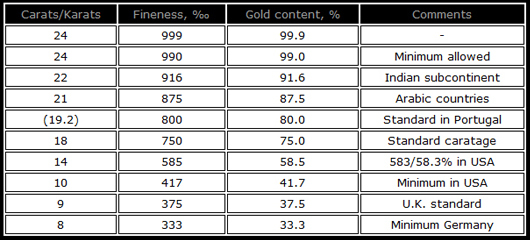
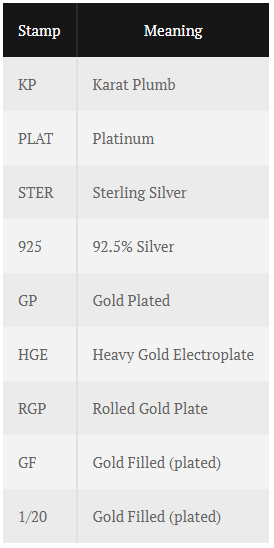
Silver
The Caratage (Karatage) System For Silver Jewelry

All Metals

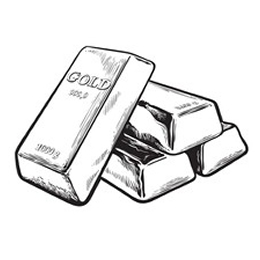
Gold
This most famous of precious metals has been highly sought after and valued throughout human history not only because of its rarity and beauty, but also because of its usefullness and that it is often found highly pure in content.
Gold is very malleable (easy to work with) and durable because it does not corrode or tarnish. Its malleability can be realised if we think of how just one ounce od gold can be beaten into a flat sheet of gold leaf measuring 17 square metres.
As for its durability, we only have to consider all the historical relics such as ancient Egyptian artefacts which have survived intact for thousands of years. Considering this then, one begins to comprehend just how ancient and historically important the craft of goldsmithing is.
Pure gold is very soft and therefore liable to damage. For this reason, most gold jewellery is made of gold alloys. The content of gold alloys consists of gold and other metals. The gold content of jewellery is measured in carats (expressed fractionally as 24ths). For example, 24 carat jewellery is pure gold, while 9 carat gold has a gold content of 9/24ths, or just over one third.
What Is Gold?
With other numbers of metals or alloys such as copper or iron pyrite, copying gold color is easy. They will look just as the gold as the real 14k gold. So why pick 14k gold? The answer is easy. Gold does not change in color, rust or corrode or fade. Gold survives time. Also gold can be shaped to any size or shapes.
However with gold’s flexibility has a drawback. Due to its flexible nature, gold’s strength in minerals or harness is near the bottom of the chart. Because of these weaknesses, gold is mixed with one or more additional metals to make it strong. We call this alloy; they are usually copper, silver, nickel. These alloys not only strengthen the gold, but determine the color of the gold. For example, yellow gold will contain copper, and white gold will have nickel, zinc and copper is mixed in. With these concepts, gold can come in many color such as pink gold or also know as rose gold, or purple gold etc.Gold.
This most famous of precious metals has been highly sought after and valued throughout human history not only because of its rarity and beauty, but also because of its usefullness and that it is often found highly pure in content.
Gold is very malleable (easy to work with) and durable because it does not corrode or tarnish. Its malleability can be realised if we think of how just one ounce od gold can be beaten into a flat sheet of gold leaf measuring 17 square metres.
As for its durability, we only have to consider all the historical relics such as ancient Egyptian artefacts which have survived intact for thousands of years. Considering this then, one begins to comprehend just how ancient and historically important the craft of goldsmithing is.
Pure gold is very soft and therefore liable to damage. For this reason, most gold jewellery is made of gold alloys. The content of gold alloys consists of gold and other metals. The gold content of jewellery is measured in carats (expressed fractionally as 24ths). For example, 24 carat jewellery is pure gold, while 9 carat gold has a gold content of 9/24ths, or just over one third.
What Is Gold?
With other numbers of metals or alloys such as copper or iron pyrite, copying gold color is easy. They will look just as the gold as the real 14k gold. So why pick 14k gold? The answer is easy. Gold does not change in color, rust or corrode or fade. Gold survives time. Also gold can be shaped to any size or shapes.
However with golds flexibility has a drawback. Due to its flexible nature, golds strength in minerals or harness is near the bottom of the chart. Because of these weaknesses, gold is mixed with one or more additional metals to make it strong. We call this alloy; they are usually copper, silver, nickel. These alloys not only strengthen the gold, but determine the color of the gold. For example, yellow gold will contain copper, and white gold will have nickel, zinc and copper is mixed in. With these concepts, gold can come in many color such as pink gold or also know as rose gold, or purple gold etc.
What Does Karat Means In 14?
In mineral community, precious metals measured in ounces. But this ounce system is not the system of 16 ounces to a pound which we are familiar with. Gold is instead measure what ancient troy standard. This standard is also used in pharmacists and medical profession today. Here is an example of weight system.
1 troy pound = 12 troy ounces
= 5760 grains
= 240 pennyweights
= 13.164 avoirdupois ounces
= 0.82275 avoirdupois poundS
= 373.236 grams
Karat in most in English speaking countries spells in “carat” but in U.S. carat is used to measure gem stone’s weight such as 1 carat diamond. The word carat is from ancient time when it was used from carob plant which was used to measure weight of gemstones. Carob plant’s seed was used for this process. One carob seed weighted about 200 milligrams.
Now going back to gold, purity of gold is measure from 1 to 24. 24 karat (24K) is purest form of the metal. So when you hear 18k gold, it means 18/24 karat which is 75% of gold and 25% alloy. More alloy, or lower karat in gold, gold becomes much more strong.
1 troy pound = 12 troy ounces
= 5760 grains
= 240 pennyweights
= 13.164 avoirdupois ounces
= 0.82275 avoirdupois poundS
= 373.236 grams
Karat in most in English speaking countries spells in “carat” but in U.S. carat is used to measure gem stone’s weight such as 1 carat diamond. The word carat is from ancient time when it was used from carob plant which was used to measure weight of gemstones. Carob plant’s seed was used for this process. One carob seed weighted about 200 milligrams.
Now going back to gold, purity of gold is measure from 1 to 24. 24 karat (24K) is purest form of the metal. So when you hear 18k gold, it means 18/24 karat which is 75% of gold and 25% alloy. More alloy, or lower karat in gold, gold becomes much more strong.
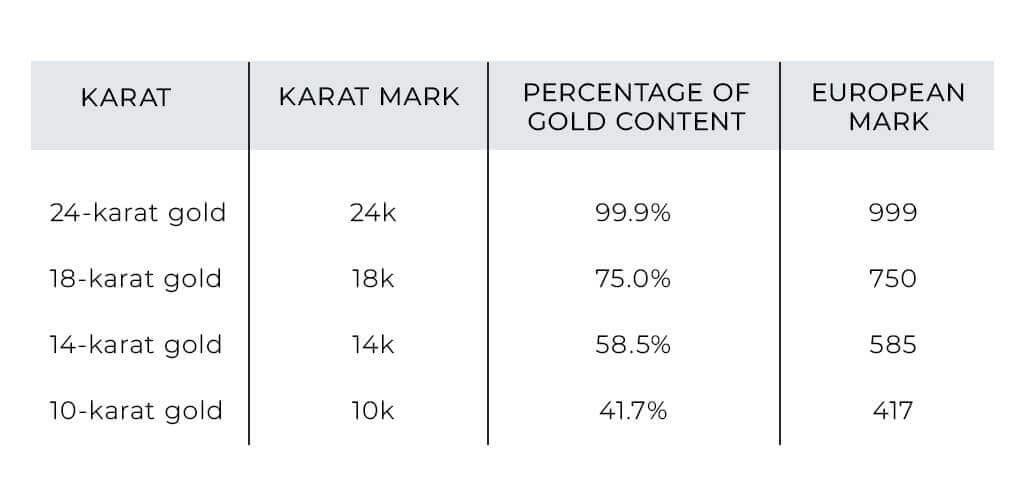
Gold Marks

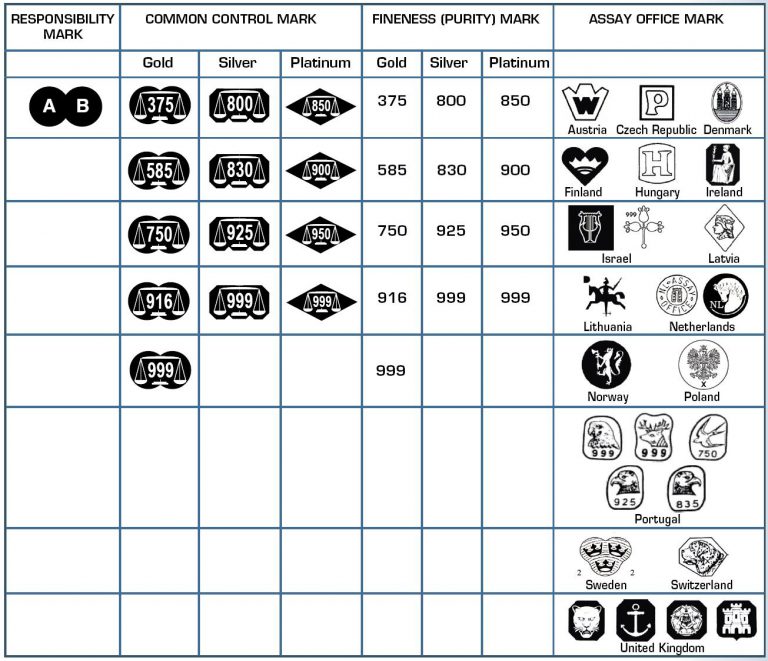
To be called gold, there are minimum gold content. It varies by where you are, but in United States, item must be at least 10 K and in England and Canada 9 K and in Germany 8 and in Italy and France 18 K.Gold Marks

Many Colors Of Gold
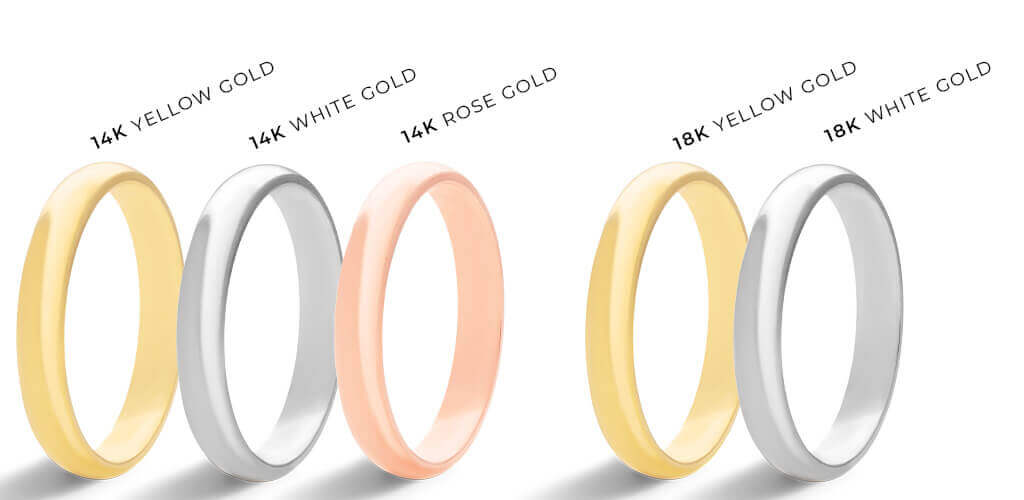
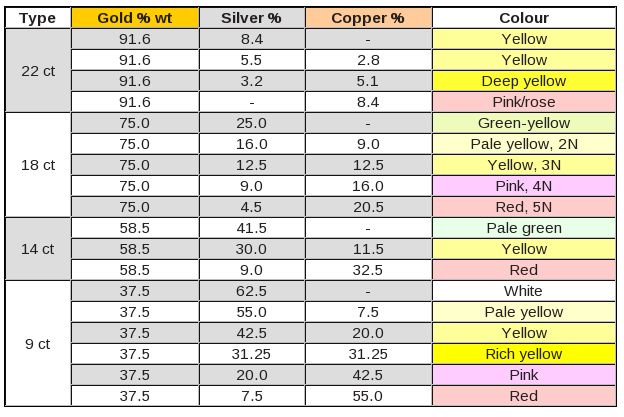
Some people are allergic to nickel and should not whear white gold which contains Nickel. Some manufacturers use Palladium instead of Nickel. White gold which contains Palladium will be more expensive than yellow gold or white gold but it will be less expensive than Platinum.
What Causes Skin Discoloration With Some Gold Jewelry?
Pure gold does not change in color or tarnish and it won’t discolor the skin. But when alloy is used to mix with gold, the gold can change and oxidize. Also human’s fat or acids in perspiration can start this change in gold. It usually gets worse in warm and damp areas where lots of salt is in the air. Sometimes, woman’s makeup can start the problem.
How to solve discoloration in gold?
1. Make a habit of removing jewelry often and cleaning the skin and jewelry.
2. Use soft cloth to wipe and clean jewelry to remove tarnish.
3. Try to switch to higher gold content jewelry. When you have discoloration gold problem in 14k gold, try to switch it to 18k gold.
What Is Gold Coatings?
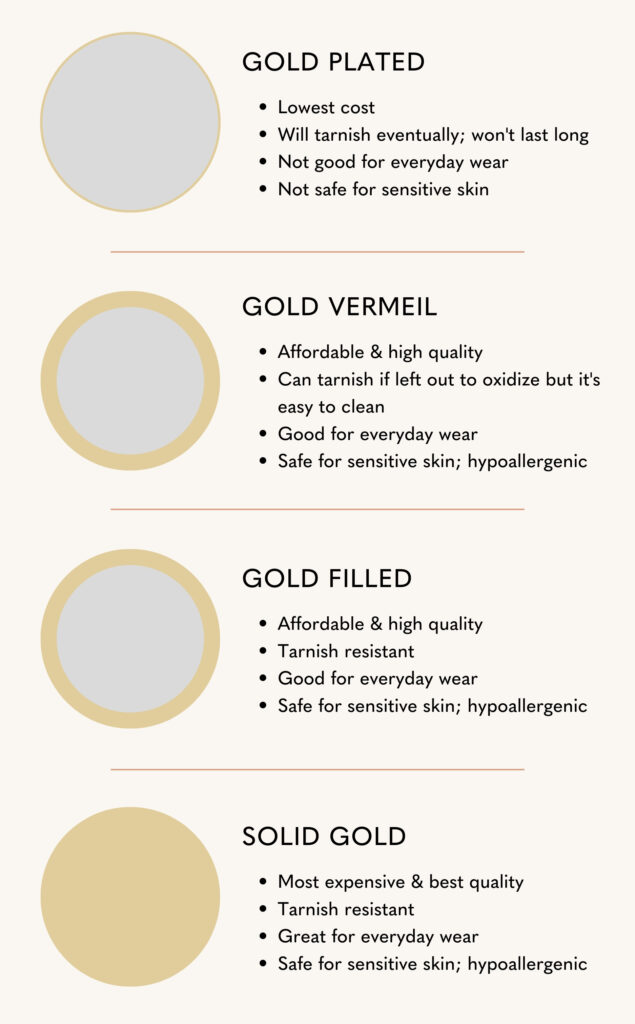
Jewelry or item less than solid 14k is considered as costume jewelry. Anything less than 10k is definitely is costume jewelry. Also you may run into term such as gold plated or vermeil jewelry. Vermeil jewelry comes into two part. When it’s vintage or antique jewelry and if its from abroad, vermeil means gold coated on bronze, brass, copper or other cheaper material.
What is Gold Plated Jewelry?
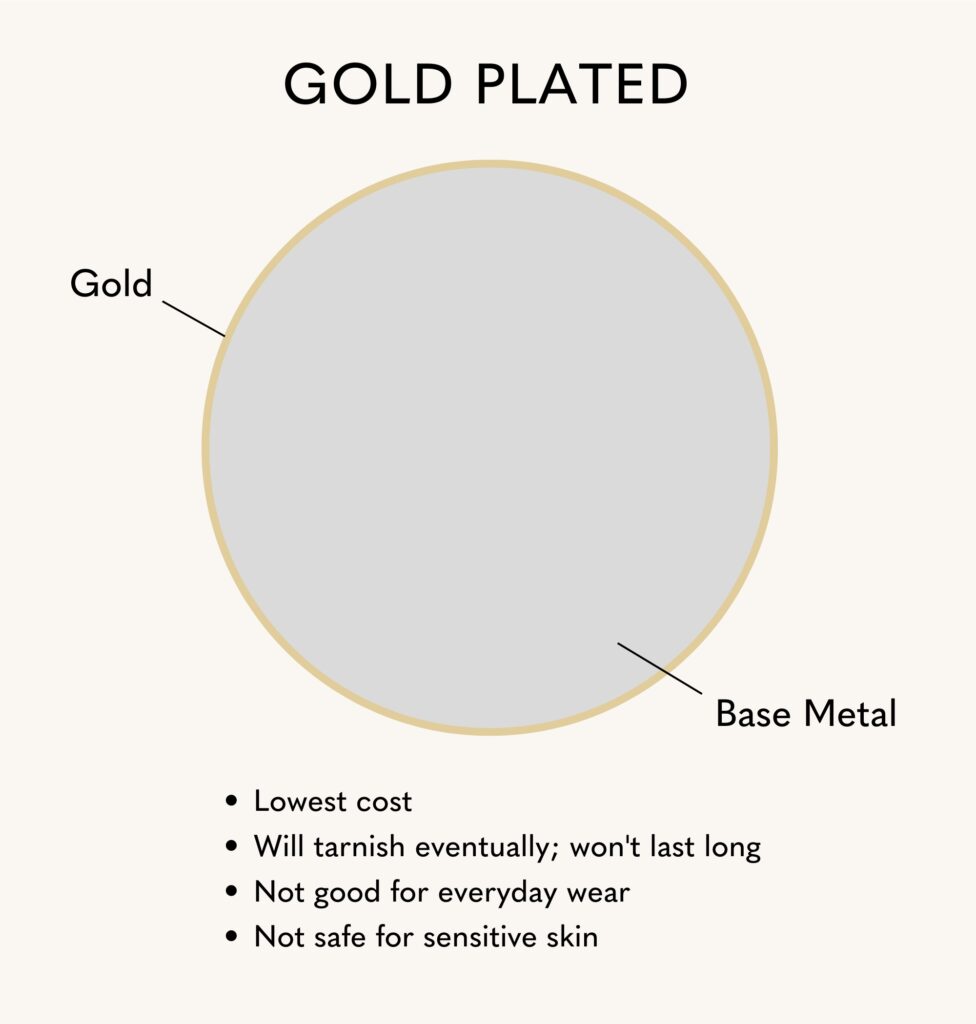
Gold plated jewelry is a very light layer of gold – 0.05% actual gold or less – on top of a base metal (usually brass or copper). The thin layer of gold is plated onto the base metal to create gold plated jewelry.
Since the gold plating is very thin, the gold can rub off easily. It is also more prone to tarnishing when exposed to any kinds of liquids or chemicals. Although gold itself does not corrode, copper and brass will, especially when exposed to liquids (in the air, sweat, lotion, perfume, etc). Gold plated jewelry is much, much cheaper than the other types of gold jewelry because it uses a tiny amount of gold on top of a base metal. Gold plated jewelry is a good option if you need jewelry for just an occasion, or for trying out new trends.
What is Gold Vermeil?
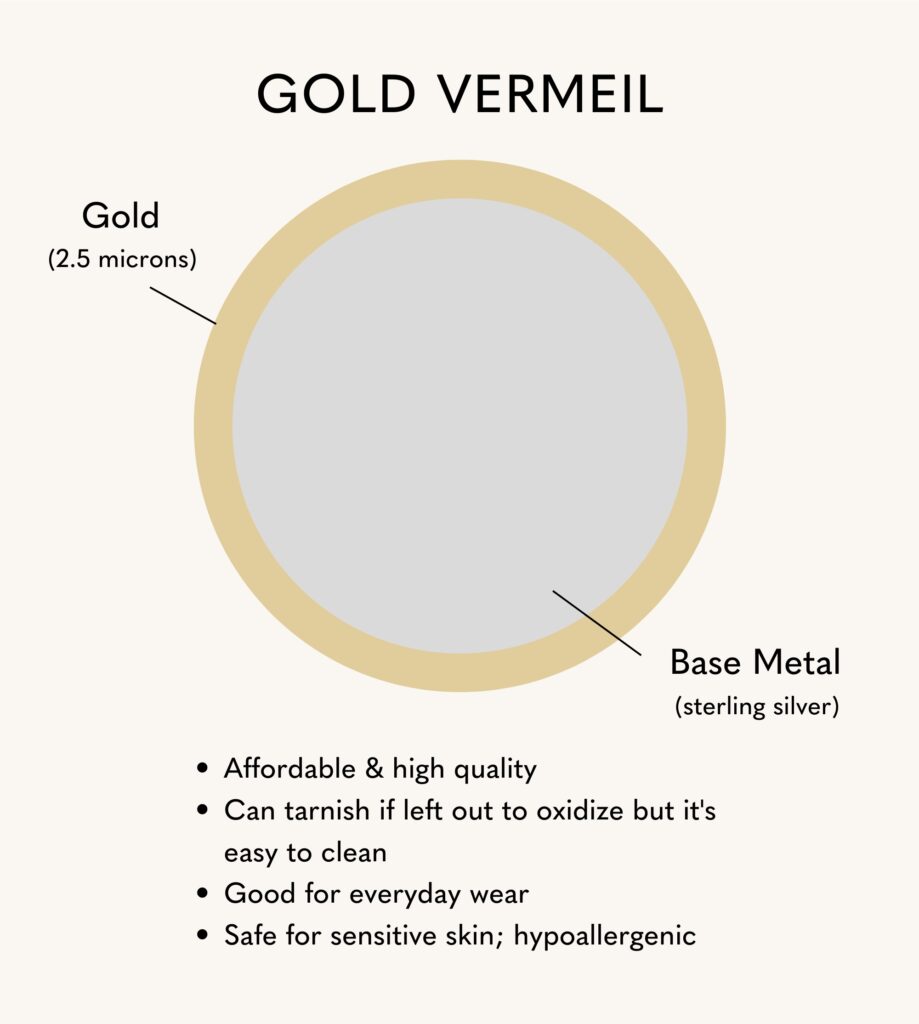
Gold Vermeil(pronounced ver-may) is 2.5 microns of gold plating on top of sterling silver. US standards require there to be at least 2.5 microns of gold plated on top of sterling silver, but some other countries require less, such as Canada only requiring 1.0 micron. It is hypoallergenic, so people with metal allergies can wear it safely. Gold vermeil lasts much, much longer than gold plated jewelry because the plating is so much thicker. Over years, with lots of excessive use, the gold can wear off in areas with a lot of contact.
Since the base metal of gold vermeil is sterling silver, and sterling silver can tarnish, gold vermeil can tarnish if it’s left in the open and not sealed in an air tight bag. Luckily, you can easily clean off the dark spots with a polishing cloth. Gold vermeil should be treated just like a sterling silver piece.
We recommend purchasing gold vermeil products from trusted brands because some companies can claim their products are vermeil, but their products don’t actually have 2.5 microns of gold. 2.5 microns converted to inches is .0001″, so as you can imagine, it’s quite hard to measure without proper equipment. At Simple & Dainty, we send our vermeil pieces to a reputable plating factory that has the capability of measuring how much gold they are plating on top of the sterling silver.
What is Gold Filled?

Gold filled is a solid layer of gold mechanically bonded to a base – jeweler’s brass. US standards require the gold layer to consist of 1/20th (or 5%) of the jewelry’s total weight. Gold filled can be made with 14k or 12k gold, with 14k being more common. Sometimes there is a marking on the jewelry piece that says 1/20 14K GF or 1/20 14K, but not necessarily all the time.
Gold filled jewelry has almost 100x more gold than gold plated jewelry. Since the gold is mechanically bonded to the base rather than plated, it can’t rub off, unlike gold plated jewelry. It has the same qualities as solid gold jewelry at a fraction of the cost – it’s tarnish resistant and waterproof, making it great for everyday wear. Gold filled jewelry is also great for people who are allergic to metals, as the material will not cause an allergic reaction.
Gold filled has some limitations because of the way it is manufactured; it is only available in wire or sheet form, so it cannot be casted or poured into a mold. Gold filled charms are either flat (made from sheets), or hollow (two pieces of sheet metal soldered together). Whenever we can’t make charms or rings out of gold filled, we use gold vermeil instead.
Brazilian gold filled, which is different than US gold filled, is another type of gold filled that is very popular nowadays. Brazilian gold filled consists of 1/30th (or 3%) of 18k gold over a base metal. It has 40% less gold than US gold filled, but can still last a while with proper care.
What is Solid Gold?
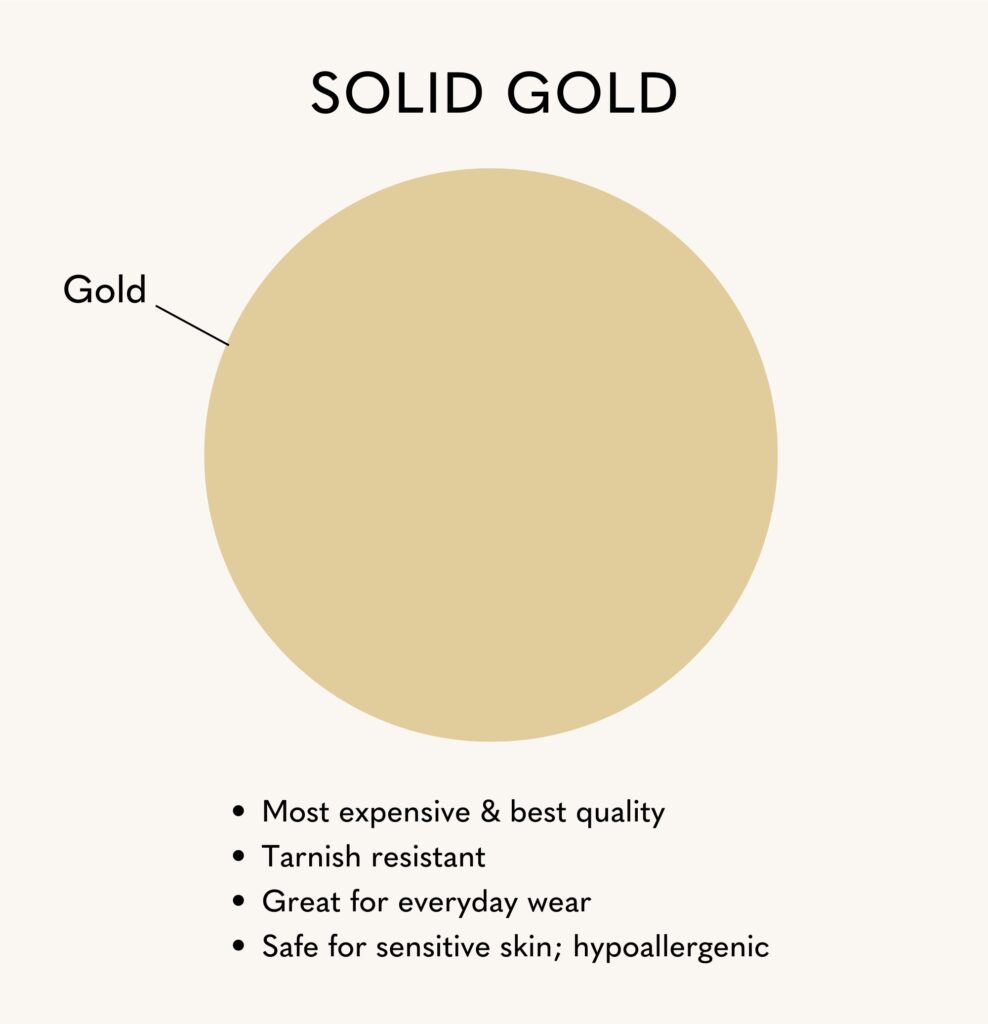
Solid gold is the best quality of gold there is. Just as the name suggests – the whole jewelry piece is made entirely of gold (no base metal). There are many different karats of gold, which determines the amount of gold vs alloy. Pure gold (24k) is too soft and malleable to wear in jewelry, so the gold must be alloyed with other metals to give it strength and durability. 14k solid gold means 14 parts gold (58.3%) and 10 parts alloys (41.7%), while 18k solid gold means 18 parts gold (75%) and 6 parts alloys (25%). The lower the karat, the less expensive it is because it is using less gold.
Solid gold is especially tarnish resistant, hypoallergenic, and perfect for everyday. It’s the most hypoallergenic type of gold, so it’s amazing for people who have sensitive skin. Solid gold is a precious metal that will last many lifetimes and can easily become cherished heirlooms! If you are looking for a “forever” piece that you can pass down, this is the material for you.
Silver
Though not as highly valued as gold, this soft and lustrous white metal has a proud history dating back thousands of years. Ornamental and decorative siverware has been unearthed in royal tombs dating back to 4000 BC.
Although much harder than gold, silver can be easily worked and beaten into silver leaf for decorative use. And just like gold it is long lasting and hard-wearing.
Silver has been used in jewellery and coinage throughout the ages in the form of a silver alloy. The fineness of silver items is measured as a proportion of the silver content. For instance, Sterling silver has a fineness of 925, which is to say that the silver content amounts to 92.5% of the piece. The other metal content of silver alloys used in jewellery is usually copper. Most silver jewellery has a fineness rating of 800, so there is 80% silver content and 20% copper in most silver jewellery.
High silver content is also evident in white gold. The gold content of white gold usually amounts to just over half, with silver amounting to one quarter of the content.
Anything other than gold such as silver and platinum are also alternatives to gold. Silver also has many qualities as gold. Such as lovely color and great flexibility, like gold silver have problems. Pure silver is too soft like pure gold, and to prevent that copper is added to add strength.
When you hear “sterling silver”, sterling is one of the most familiar silver alloys. Sterling consists of 925 parts pure silver and 75 parts copper. Term karat does not apply to silver. Silver is simple in a sense that silver is either sterling or not. Due to this, in silver, Federal Trade Commission prohibits the term use “sterling” or “coin silver” in reference to a plated article. Because when they say “silver plated” the plating is pure silver not like other plating metal.
Problems of Silver
One major draw back of silver jewelry is that it is prong to tarnish. Silver will almost turn deepening to brown and to black. This process is quicken by today’s inner city where there is lots of air pollutions. Silver is also sensitive to alkali compounds. Which means things like sea air can tarnish the silver.
Solution
Best solution for tarnished silver is to buy silver cleaning chemical. And use soft cloth and apply these chemicals to clean your jewelry. Also toothpaste does a job too.
Platinum
Although artefacts containing platinum have been found dating back to the times of the ancient Egyptians, it is thought that they were unaware of this precious metal being present in the mainly gold pieces it has been found in. The first discoveries which identify Platinum as a distinct precious metal occurred in 16th century Columbia. Indeed, the name Platinum dates from this time, when Spanish invaders noted its resemblance to silver ; the word platinum coming from the Spanish, ‘platina del Pinta’.
The demand for platinum in jewellery has greatly increased in recent times, with particularly high demand in Japan.
Most of the world’s platinum comes from the Transvaal area of South Africa and Russia.

Bronze
The history of mankind’s use of bronze stratches way back to 3000 BC. Bronze is often an alloy made up of the metals copper and tin, although in recent times bronze has also been made using aluminium, manganese or zinc instead of tin.
Being very hard and durable yet easy to cast, bronze has been widely used throughout history for coinage, tools and weaponry. Iron hjas taken the place of bronze in many uses over the centuries because it is more widely available, reather than it being significantly better or more suited to its uses.
Assaying
The content and value of precious metals is determined by processes of chemical analysis called assaying. The history and formulation of the processes involved is rooted in the work of ancient alchemists and goldsmiths who would subject base metals to heat.
Assaying by fire is still the most economical methos of assaying precious metals, even more so than modern methods such as spectrographic analysis because of the amounts of the metals needed to carry out the tests.
The fire assaying method consists of 6 steps :
1. Sampling. A representative sample is taken.
2. Fusion. The sample is then melted along with flexes and other agents to collect elements of precious metals in droplets of lead. These are then cooled to produce a ‘lead button’.
3.Coppelasion. The ‘lead button’ is then melted and the impurities are oxidized. Beads of precious metals then form.
4.Weighing. Beads of gold and silver are then weighed to determine their gold and silver content. Platinum is present in quantities to small to weigh however.
5.Parting. Each bead is then trated to dissolve out the silver content.
6.Weighing. Finally, the reamning gold content is weighed and this measurement is subtracted from the gold-silver bead weight previously measured. This calculation then gives us the weight of the silver content.
Diamond
What Are The Diamonds Made Of?
Each diamond is the result of an amazing natural journey which has turned an ancient element into the world’s most precious and mystical gem. Diamonds were pure carbon crystallized at high temperatures and pressures, 100 miles beneath the earth’s crust. There they remained, keeping their precious secrets, until powerful forces carried them upward within volcanic molten lava, only to be concealed again by falling ash and rock.
Over millions of years, the wrath of nature in the form of winds, water, heat and cold would rework the landscape time and time again. Only a small number of diamonds managed to survive this remarkable journey. Of those that did, only a tiny proportion that have been found are of a size and quality that can be cut, polished and set into jewelry. The diamond is a true miracle.
The youngest diamond is 900 million years old. The oldest known diamonds are more than 3 billion years old, which is older than many stars in the sky.
For thousands of years the only source of diamonds known to man was an area close to Hyderabad in south India. Today, the main sources are South Africa, Botswana, Angola, Russia, Canada and Australia.
Celebrations came in 1866 when, at last, a truly significant source of diamonds was discovered in South Africa. A farmer’s child was playing with some brightly colored stones beside a river, one of which was recognized as a diamond. This diamond was appropriately named ‘Eureka’.
Despite modern methods, diamonds are still very difficult to find – from the frozen tundra of Siberia and Canada to the parched deserts of Africa, at least enough earth to fill a house must be carefully sifted to find a single diamond.
Where Does The Word ‘Diamond’ Originate From?
The word diamond comes from the Greek term ‘adamas’ which means unconquerable.
What Does The Word ‘Carat’ Mean?

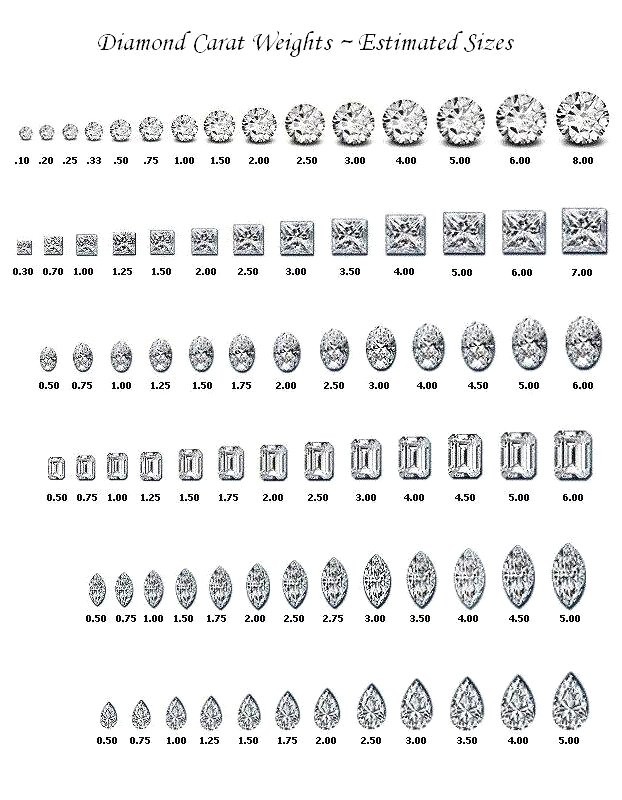
The carat is the unit of weight for diamonds. A carat weights 0.20 of a gram and is divided into 100 points, therefore a three-quarter carat diamond is 75 points, a half carat diamond is 50 points and a quarter carat diamond is 25 points and so on …
The derivation of the word carat is most interesting – Revolutionary Indian diamond traders in the 17th century used the locally-available carob seed as a comparison when assessing the weight of the rough diamond. The carob seed on one side of the weighing scales and rough diamonds on the other. By a miraculous feat of nature the weight of a single carob seed was always 0.20 gram. Following this the unit of weight for diamonds was established and the name ‘carob’ became ‘carat’.
What Makes Up The Value Of A Diamond?

The quality and therefore the value of a diamond is evaluated using 4 criteria – carat, clarity, color and cut.
The weight of a diamond is fixed and precise, and the bigger the stone, the greater the rarity and therefore the higher the price per carat. A one carat diamond is one in a million diamonds.
The other 3 criteria are much more subjective –
Flaws and imperfections within the diamond will reduce the value. The very best is internally flawless.
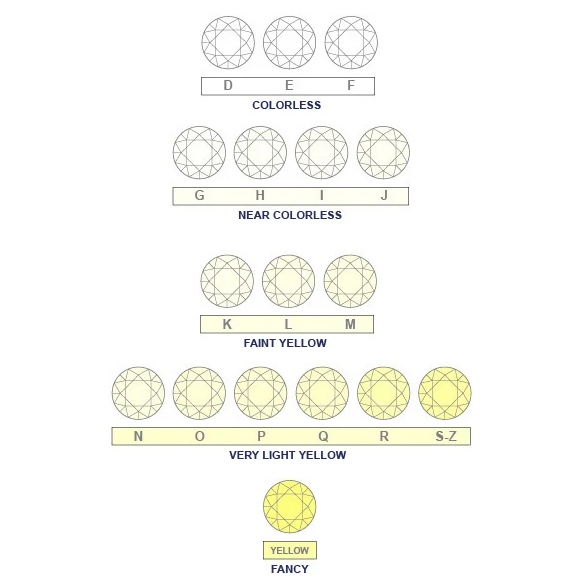
To the untrained observer most diamonds will appear to have no tint colour, but most are slightly coloured and are evaluated on a scale from pure white to colours of the rainbow. Pure white is rare but fancy colours are extremely rare. The highest price paid per carat at auction for a diamond is US$1 million for a 0.95 carat red diamond.
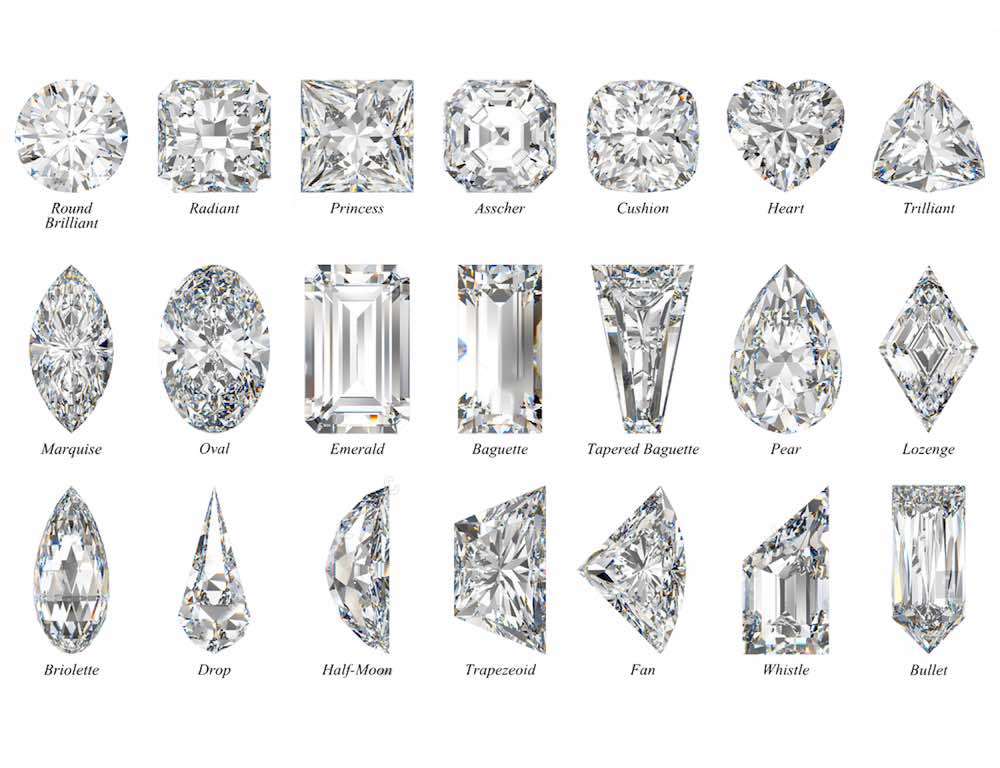
The cut of a diamond is the final key to setting the value. The finest and most exacting cutting and polishing will maximize the diamond’s fire and luster.
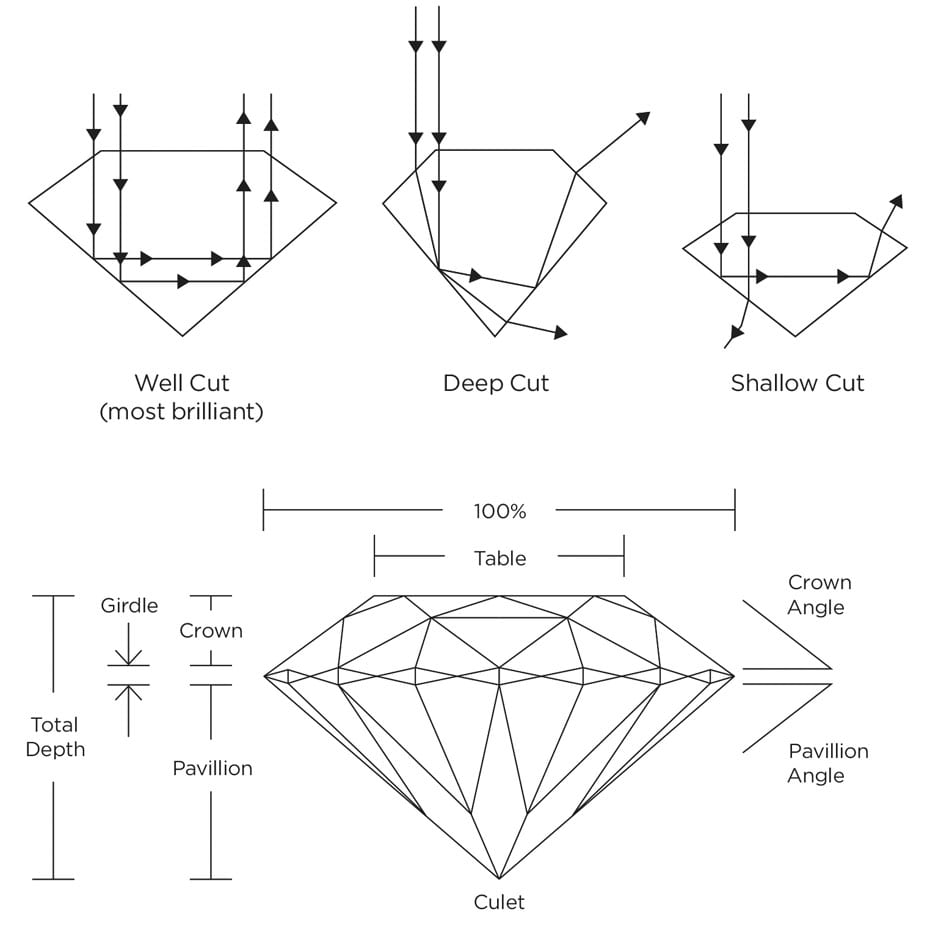
A fancy shape such as a pear shape will also increase the value. The most ever paid for a pear-shaped diamond of 42 carats is US$7.5 million.
Value is very much expressed through rarity – If you were to gather all the diamonds ever polished since the beginning of time, they would only fill one double-decker bus.
What Is The Powerful Magic And Mystery Of The Diamond?
The magic and mystery of diamonds has fascinated and intrigued mankind for centuries.
No tool could cut them and no fire could burn them which led many to believe that diamonds had unique supernatural powers.
To the Greeks they were the tears of the God, while Romans believed they were shards from the stars. For the Indians they were good-luck charms warding off illness, thieves and forces of evil. To others they were stones that would heal and bestow knowledge.
Diamonds became eagerly sought after by the world’s most wealthy and powerful people. In fact it was a common belief among Kings that wearing a diamond into battle would magically protect the wearer. It was not uncommon to see royal armouries glittering with diamond-embellished weapons.
Where Does The Custom Of The Engagement Ring Come From?
The custom of wearing a diamond on the fourth finger of the left hand comes from the ancient Egyptians, who believed that the vena amoris (vein of love) runs directly from this finger to the heart.
The romantic tradition of giving a diamond ring as a token of love and commitment began in the 15th century when Archduke Maximilian of Austria gave Mary of Burgundy a diamond ring on their engagement.
Today this tradition continues with passion and absolute importance. Every year throughout the world there are now hundreds of thousands of diamond engagement and anniversary rings gifted with love.
It is now a unique symbol of commitment, woven into our way of life.
Why Are Diamonds The external Symbol Of Love?
No other gem expresses human emotion more powerfully than a diamond. Earth-grown, rare, precious, magical and indestructible. These essential qualities have made diamonds the perfect symbol for true love and romance.
Perhaps the most publicized diamond gifts in modern times have been diamond jewels given by Richard Burton to Elizabeth Taylor. These include a 33 carat brilliant cut diamond worth over US$10 million and a pear-shaped 69 carat Taylor-Burton diamond.
More recently, producer-director Bruce Paltrow demonstrated his love for, and pride in, daughter Gwyneth when, after winning the Best Actress award at the 1999 Oscars, he bought her the stunning 40 carat diamond necklace she had borrowed to wear to the ceremony.
